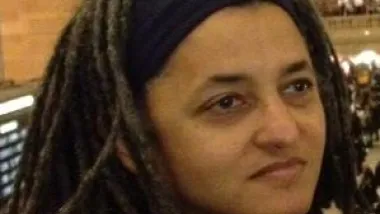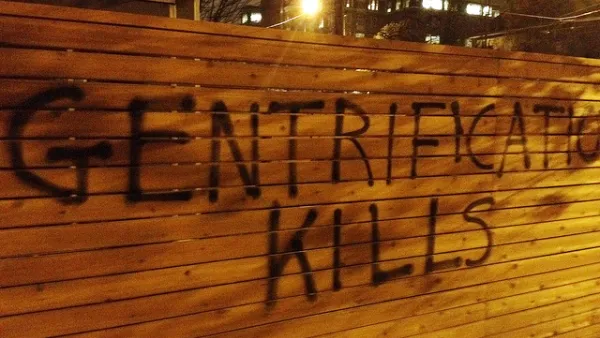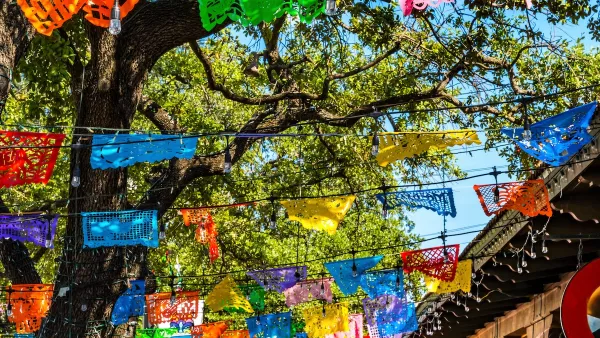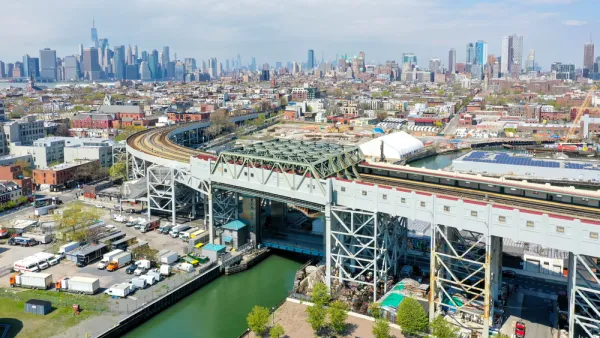This past weekend I attended a memorial service for a local activist. Eric Quezada was important in many planning-related issues here in San Francisco – how we create space that reflects the cultural traditions of our large immigrant communities, the importance of preventing displacement of low-income people, the development of affordable housing and institutions that meet the needs of all of our citizenry. I had known Eric for many years, but had the privilege of working most closely with him when I served on our city’s Planning Commission and he was a lead organizer in the Mission District, an historically Latino neighborhood threatened by dot-com fueled gentrification. In his short 45 years on earth, Eric touched the lives of thousands here and around the world.
This past weekend I attended a memorial service for a local
activist. Eric Quezada was important in many planning-related issues here in
San Francisco – how we create space that reflects the cultural traditions of
our large immigrant communities, the importance of preventing displacement of
low-income people, the development of affordable housing and institutions that
meet the needs of all of our citizenry. I had known Eric for many years, but
had the privilege of working most closely with him when I served on our city's
Planning Commission and he was a lead organizer in the Mission District, an
historically Latino neighborhood threatened by dot-com fueled gentrification.
In his short 45 years on earth, Eric touched the lives of thousands here and
around the world. The hundreds at his memorial reflected some of the many
communities with which he'd worked. Eric was an internationalist, and this was
reflected in the faces of those gathered to laugh and to cry together in his memory.
Eric's memorial was also an homage to the use of urban space
and the seamless multiculturalism that is San Francisco. The memorial was held
in a public school auditorium, a space that belongs to everyone. American
public schools, cultural battles aside, represent education, equity,
opportunity, and hope – the best in us. In a city like San Francisco, that
includes language immersion, futbol and football, and murals of local community
leaders – including eviction dates for many. It means that when Aztec Dancers
emerge into the school courtyard to begin the ceremony, they are both special
and familiar. Children and politicians, activists and families, White and
Black, all bow in the four directions while the dancers commemorate the passage
of this Guatemalan immigrant, descendant of the creators of these ancient
dances, from our midst.
Hours later, we gather again in the courtyard, this time
answering the call of trumpet, sousaphone, drum: a New Orleans style brass
band. The Liberation Brass Band is of San Francisco – the drummer is a six-foot
tall tattooed woman with dyed red dreadlocks wearing impossibly high heels –
but the music is St. James Infirmary.
The band leads us in a Second Line down the wide sidewalks
along Valencia Street. Eric spent hundreds of hours working to keep viable the
small businesses that lined that street and which served the neighborhood's
low-income community; the gentrification of the Mission is inscribed on this
street. The street itself testifies to Eric's impact. We dance past used
bookstores and trendy restaurants getting ready for evening service, past
corner bodegas and stores selling expensive curios; tiny pocket parks and a
shop which trades in pirate goods such as eye patches and peg legs. A DJ
spinning records outside one business turns off his music as we pass; a group
of musicians jamming on a corner join the brass band's song. People stop what
they are doing to watch, some gawking, some looking satisfied, as though they
expected a Second Line or some other equally unlikely spectacle – isn't that what
the Mission is all about? A few people ask "For Eric?" as we pass, nodding
sadly when we reply.
We stop for call and response in front of the nonprofit Eric
directed before he died: "¡Eric!" "¡Quezada! ¡Presente!", and again at a few
other locations that were meaningful in Eric's life.
The best urban spaces are almost infinitely adaptable. They
are experienced as different places by different people. For the Hipsters
drinking kombucha in Valencia Street cafés, that street is a space of tribal
tattoos and restaurants serving locally sourced food. For poets and other
artists it is inspiration and performance space. For activists, planners and
academics, Valencia Street is a space of contestation. For neighborhood
families it is a school, an after-school tutoring program, a short walk to the
transit they take to their jobs. And when all of those people are gathered in
shared remembrance? It is the route of a Second Line that seamlessly,
naturally, encompasses the multudinous cultural influences that make up San
Francisco.

Analysis: Cybertruck Fatality Rate Far Exceeds That of Ford Pinto
The Tesla Cybertruck was recalled seven times last year.

National Parks Layoffs Will Cause Communities to Lose Billions
Thousands of essential park workers were laid off this week, just before the busy spring break season.

Retro-silient?: America’s First “Eco-burb,” The Woodlands Turns 50
A master-planned community north of Houston offers lessons on green infrastructure and resilient design, but falls short of its founder’s lofty affordability and walkability goals.

Test News Post 1
This is a summary

Analysis: Cybertruck Fatality Rate Far Exceeds That of Ford Pinto
The Tesla Cybertruck was recalled seven times last year.

Test News Headline 46
Test for the image on the front page.
Urban Design for Planners 1: Software Tools
This six-course series explores essential urban design concepts using open source software and equips planners with the tools they need to participate fully in the urban design process.
Planning for Universal Design
Learn the tools for implementing Universal Design in planning regulations.
EMC Planning Group, Inc.
Planetizen
Planetizen
Mpact (formerly Rail~Volution)
Great Falls Development Authority, Inc.
HUDs Office of Policy Development and Research
NYU Wagner Graduate School of Public Service





























